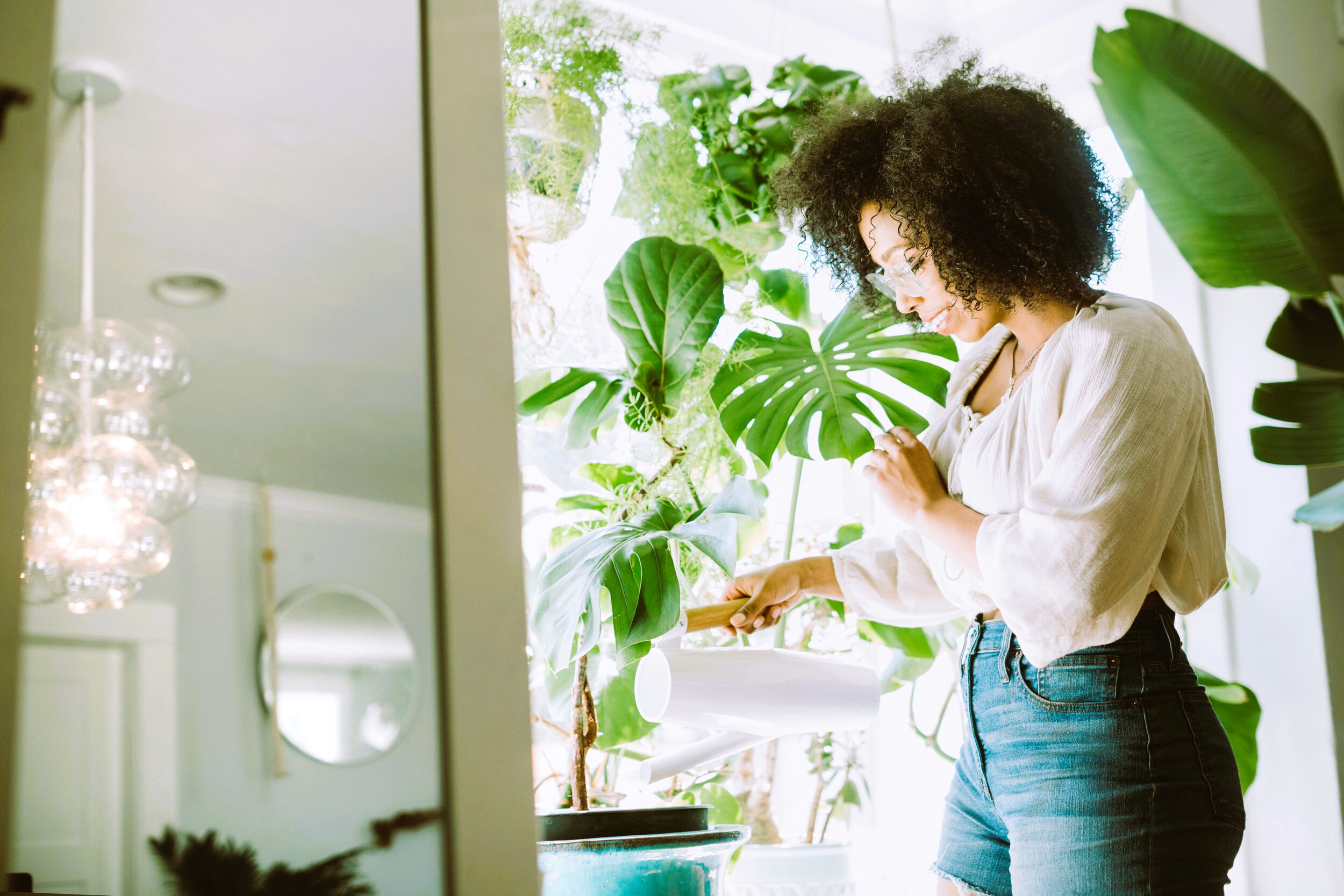In the pursuit of creating harmonious living spaces, the integration of indoor plants has emerged as a popular and health-conscious design choice. Beyond their aesthetic appeal, indoor plants contribute to the overall well-being of a home and its occupants. This article delves into the myriad benefits of indoor plants, exploring how these green companions foster a healthier and more vibrant living environment.
The Green Revolution Indoors
The trend of bringing the outdoors inside has gained momentum, driven by a growing awareness of the positive impacts that indoor plants can have on physical and mental health. As we explore the benefits, it becomes evident that indoor plants are not merely decorative elements but essential contributors to a healthier lifestyle.
1. Improved Indoor Air Quality
Natural Air Purifiers:
Indoor plants act as natural air purifiers, absorbing pollutants and enhancing air quality. Through a process known as phytoremediation, plants filter out toxins such as formaldehyde, benzene, and trichloroethylene, promoting a cleaner and healthier indoor atmosphere.
Humidity Regulation:
Plants release water vapor during a process called transpiration, regulating humidity levels. This natural moisture balance can be particularly beneficial in indoor environments with dry air, contributing to respiratory health and preventing issues like dry skin and irritated mucous membranes.
2. Enhanced Mental Well-Being
Stress Reduction:
The presence of indoor plants has been linked to stress reduction and improved mental well-being. The visual and tactile connection with nature provides a calming effect, creating a more serene and inviting living space.
Increased Productivity:
Studies have shown that the introduction of indoor plants in work and study environments can enhance concentration and productivity. The greenery serves as a visual stimulus, reducing mental fatigue and increasing focus. Read about a sustainable approach to water management in the article about Rainwater Harvesting.
3. Biophilic Design for Health
Biophilic Connection:
Biophilic design, incorporating elements of nature into indoor spaces, is associated with numerous health benefits. Indoor plants play a crucial role in this design philosophy, fostering a connection with the natural world that resonates with our inherent biophilic tendencies.
Visual Appeal:

Beyond their health benefits, indoor plants contribute to the visual appeal of interiors. The diverse shapes, colors, and textures of different plant species can be used to create aesthetically pleasing arrangements, enhancing the overall ambiance of a room.
4. Practical Tips for Indoor Gardening
Choose Low-Maintenance Plants:
For those new to indoor gardening, selecting low-maintenance plants is advisable. Species like snake plants, pothos, and spider plants thrive with minimal care, making them ideal choices for beginners.
Consider Light Requirements:
Different plants have varying light requirements. Understanding the natural light conditions in your home and choosing plants accordingly ensures their optimal growth. Some plants thrive in bright, indirect light, while others are more tolerant of low-light conditions.
The Role of Standardization in Indoor Plant Care
Adhering to standardized practices in indoor plant care is essential for maximizing their benefits while minimizing potential risks. Standards provide guidelines for factors such as soil composition, watering frequency, and pest control. For comprehensive information on indoor plant care standards in Canada, you can refer to Canada’s official website.
Canadian Indoor Plant Care Standards
- Canadian Council of Ministers of the Environment (CCME): CCME provides guidelines on indoor air quality, including recommendations for incorporating plants to improve air quality in indoor spaces.
- Canadian Standards Association (CSA): CSA develops standards related to horticultural products and indoor plants. Adhering to these standards ensures the use of quality soil, fertilizers, and pest control measures in indoor gardening.
- Canadian Ornamental Horticulture Alliance (COHA): COHA offers guidelines for sustainable horticulture practices, encouraging environmentally friendly approaches to indoor plant cultivation.
Conclusion
As we embrace the idea that healthy gardens contribute to healthy homes, the role of indoor plants becomes increasingly significant. Their ability to purify the air, enhance mental well-being, and contribute to biophilic design underscores the importance of incorporating greenery into our indoor spaces.
By following practical tips for indoor gardening and considering Canadian standards in plant care, individuals can create thriving indoor gardens that positively impact both the aesthetics and health of their homes. Let the green revolution indoors continue, as we cultivate spaces that not only please the eye but also nurture the body and soul.


